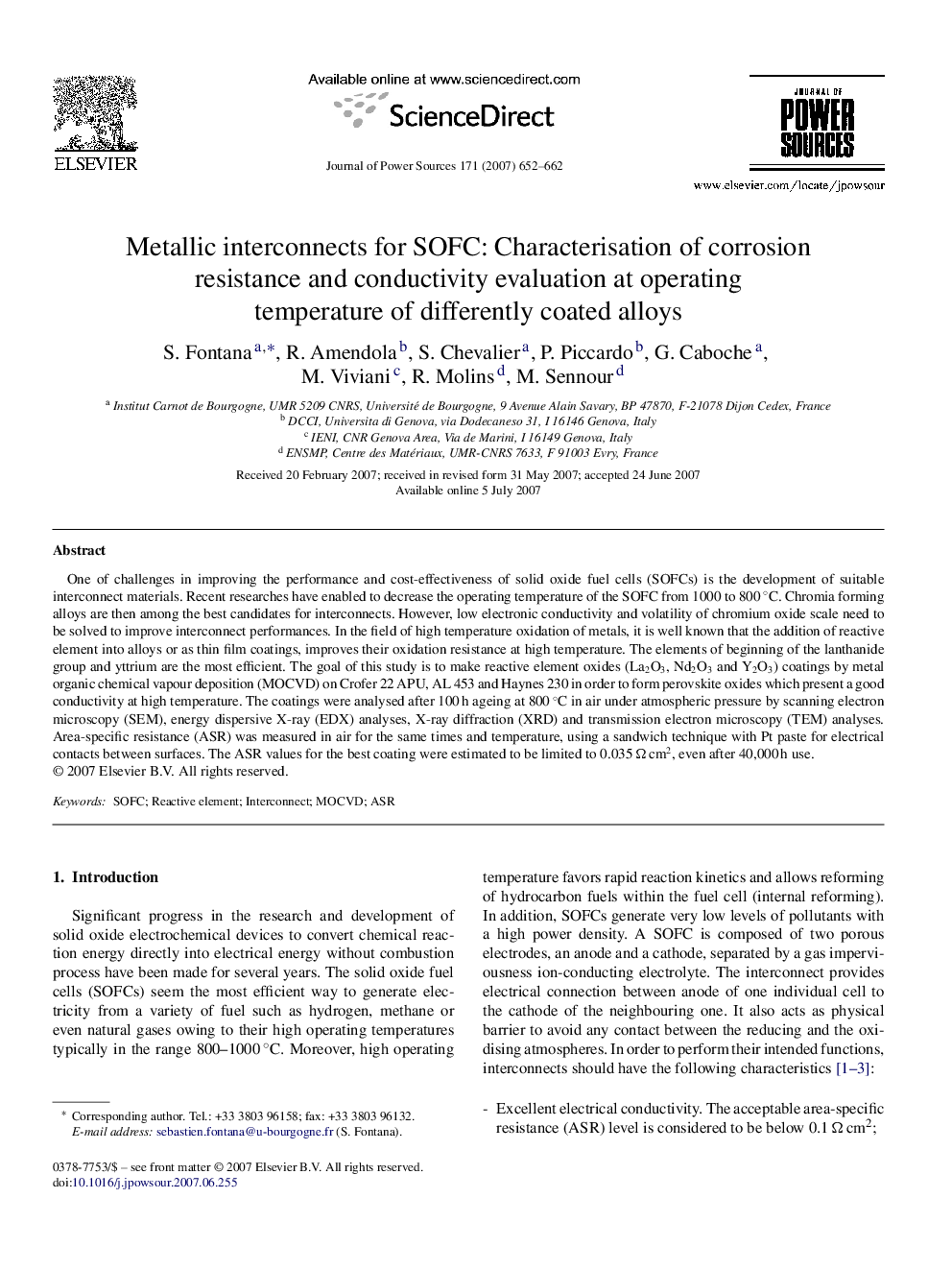| Article ID | Journal | Published Year | Pages | File Type |
|---|---|---|---|---|
| 1286379 | Journal of Power Sources | 2007 | 11 Pages |
One of challenges in improving the performance and cost-effectiveness of solid oxide fuel cells (SOFCs) is the development of suitable interconnect materials. Recent researches have enabled to decrease the operating temperature of the SOFC from 1000 to 800 °C. Chromia forming alloys are then among the best candidates for interconnects. However, low electronic conductivity and volatility of chromium oxide scale need to be solved to improve interconnect performances. In the field of high temperature oxidation of metals, it is well known that the addition of reactive element into alloys or as thin film coatings, improves their oxidation resistance at high temperature. The elements of beginning of the lanthanide group and yttrium are the most efficient. The goal of this study is to make reactive element oxides (La2O3, Nd2O3 and Y2O3) coatings by metal organic chemical vapour deposition (MOCVD) on Crofer 22 APU, AL 453 and Haynes 230 in order to form perovskite oxides which present a good conductivity at high temperature. The coatings were analysed after 100 h ageing at 800 °C in air under atmospheric pressure by scanning electron microscopy (SEM), energy dispersive X-ray (EDX) analyses, X-ray diffraction (XRD) and transmission electron microscopy (TEM) analyses. Area-specific resistance (ASR) was measured in air for the same times and temperature, using a sandwich technique with Pt paste for electrical contacts between surfaces. The ASR values for the best coating were estimated to be limited to 0.035 Ω cm2, even after 40,000 h use.
